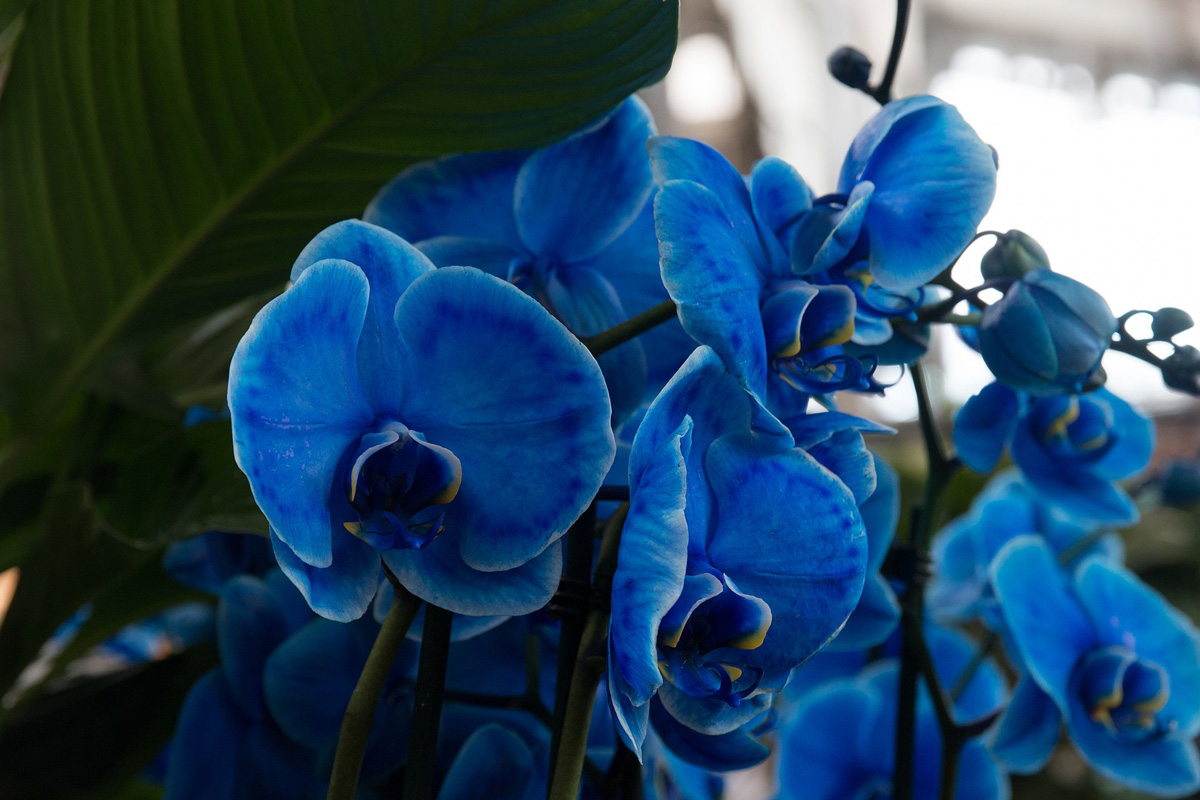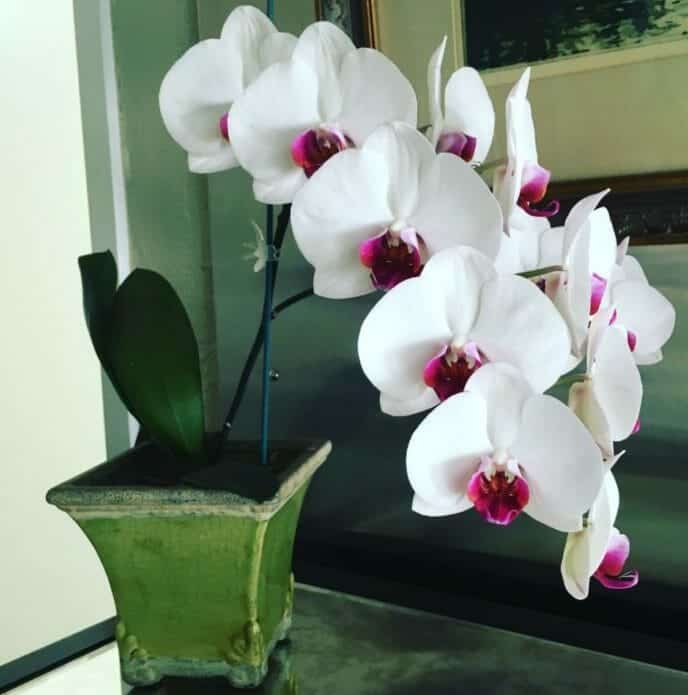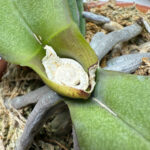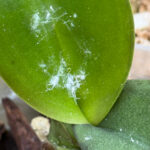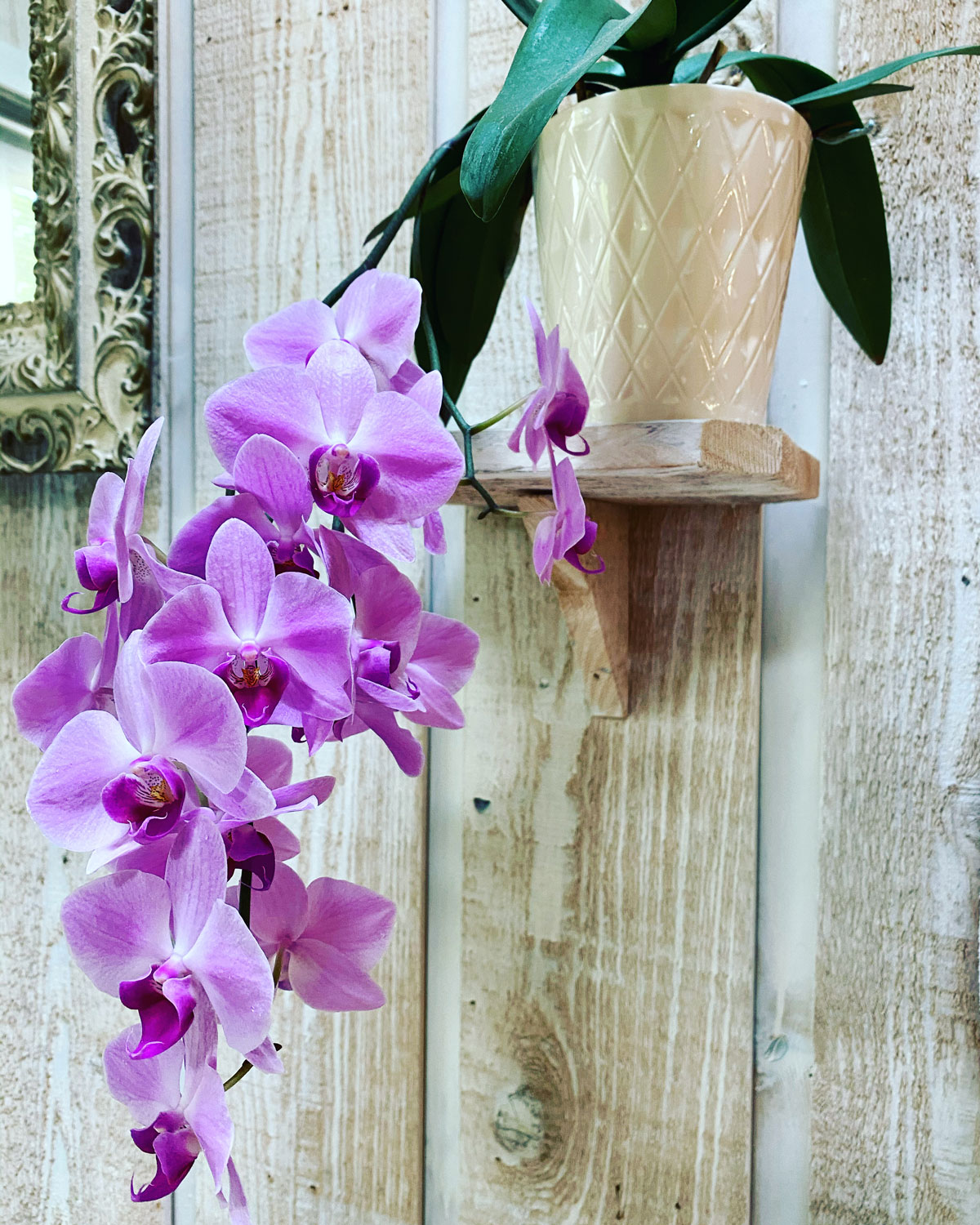Some of the links in this post may be affiliate links.
The sky is the limit when exploring ways to grow and display your Phalaenopsis orchids, commonly known as moth orchids. In this post, I’ll show you 7 different ways that I like to grow these versatile plants. Pick a couple, or try all of them!
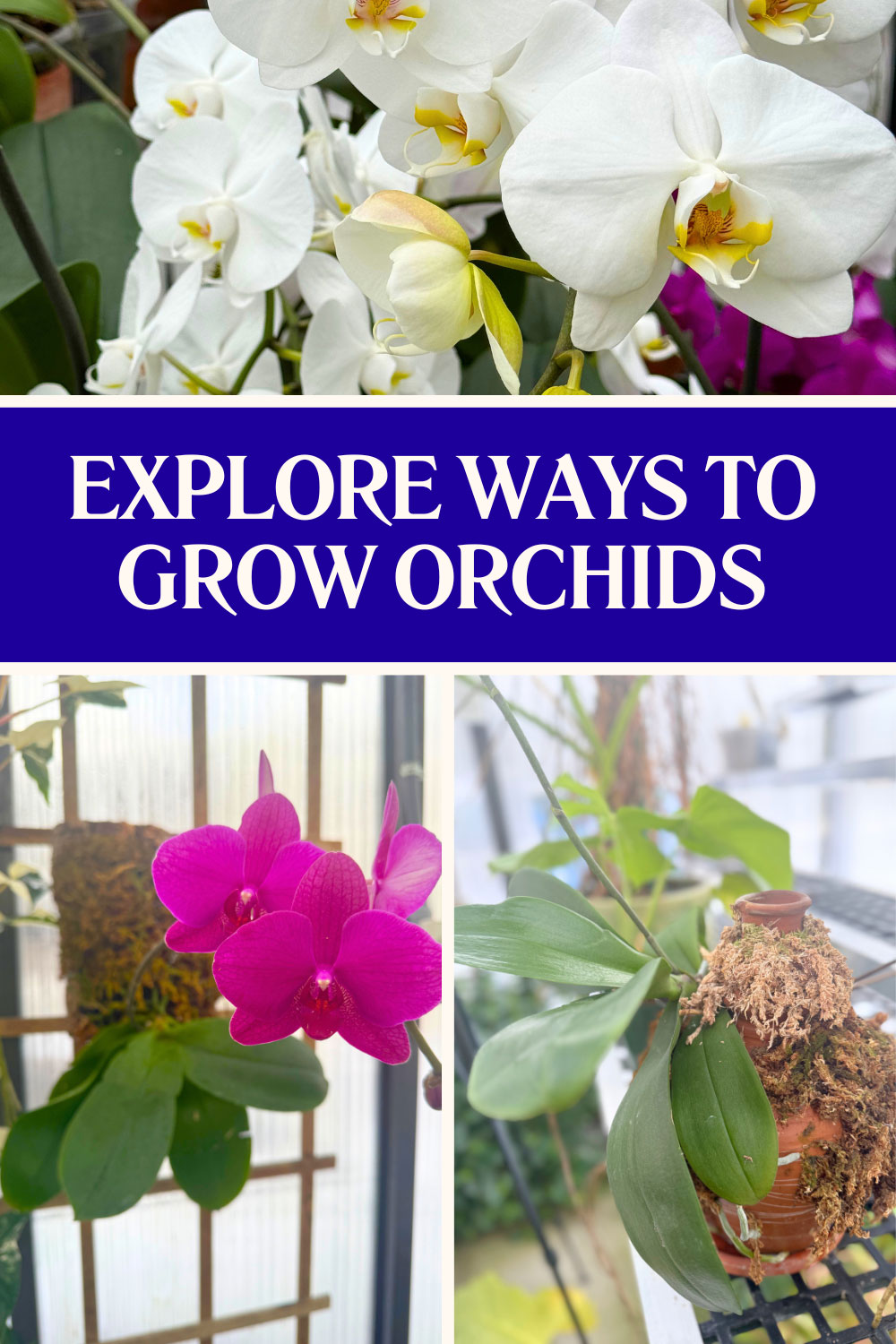
Table of Contents
Ways to Grow Phalaenopsis Orchids
1. Mounted on cork
Phalaenopsis orchids are epiphytes and they naturally grow on tree branches, so mounting them is a great way to mimic how they grow in nature.
This process is actually quite simple, and I’ll refer you to a very short video soon so you can visually see how I did this.
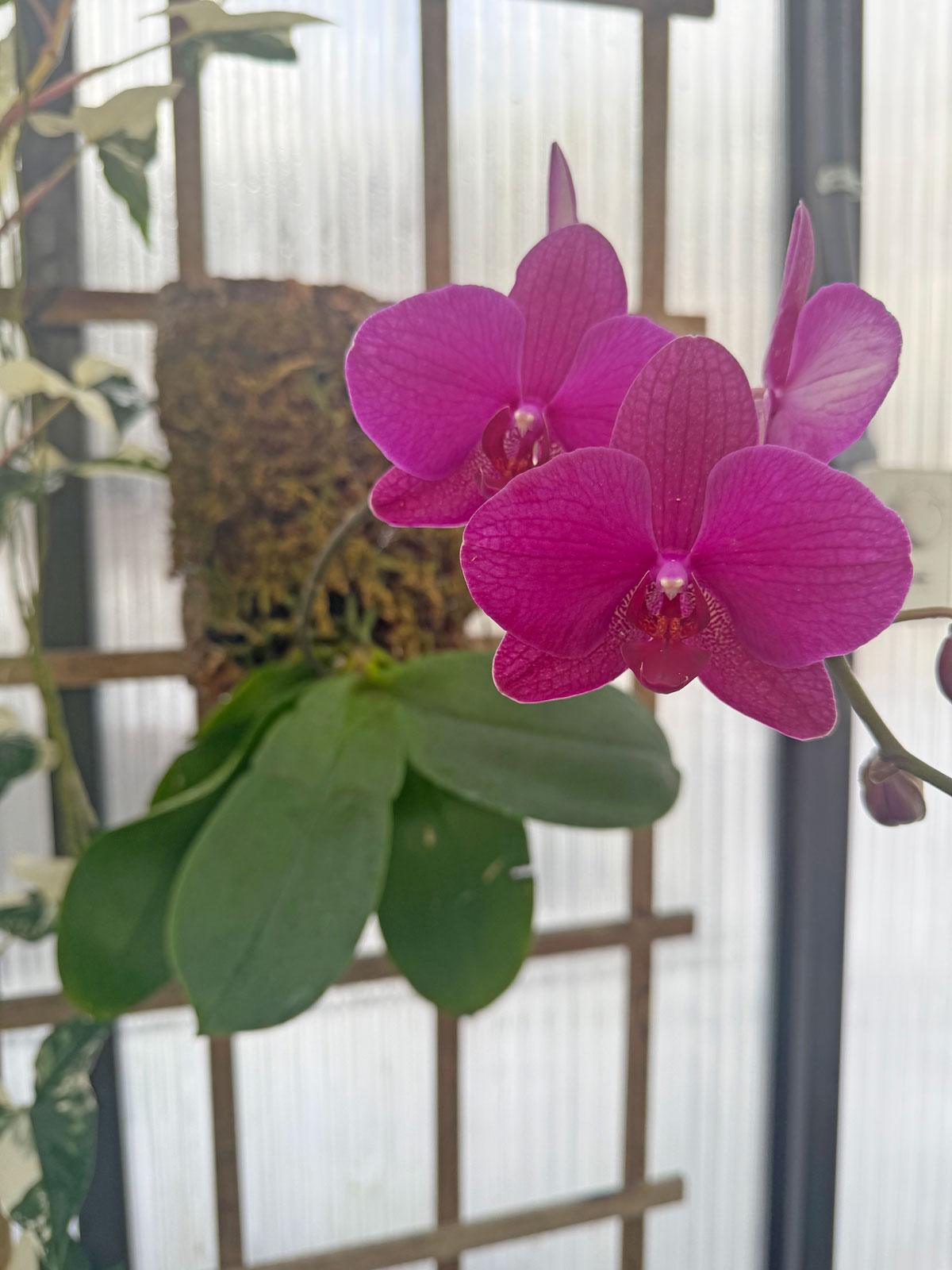
First, I took an orchid that was growing in a pot, gave it a good watering so that the bark would come off more easily, and I removed all of the bark. Watering your plant well will also make the roots more flexible so that they are less likely to break when you’re working with them.
After that, I cleaned up any dead roots and snipped off any old flower stalk. Next, I soaked some sphagnum moss for a few minutes and gently squeezed out excess water.
I took some moss and then wrapped clear fishing line around the cork and tied it securely. This created a thin layer of moss to hold some moisture. Next, I placed the orchid roots right on top (with the leaves positioned below the roots), added another layer of moss on top of the roots, and wrapped the fishing line around the cork several times and tied the line to secure everything.
I also drilled a couple holes near the top of the cork and cut a piece of of a wire clothes hanger. I bent the clothes hanger to make a U shape and inserted the two ends in the holes that I drilled. Each end was then bent down so I could hang it in my greenhouse. You can certainly modify this depending on where you’re going to be hanging your mounted orchid.
To see how I did this, watch this short video on how to mount a moth orchid on cork.
Mounted orchids need to be watered really frequently since they dry out much more quickly than orchids in pots. This one is hanging in my greenhouse and I water it almost everyday.
2. Mounted on a terracotta vase
I’m very proud of this creation! I found a terracotta vase while antiquing at a flea market, and one day I was inspired to create a self-watering vase for a Phalaenopsis. I basically followed the same steps as mounting the orchid onto the cork slab just like I described above.
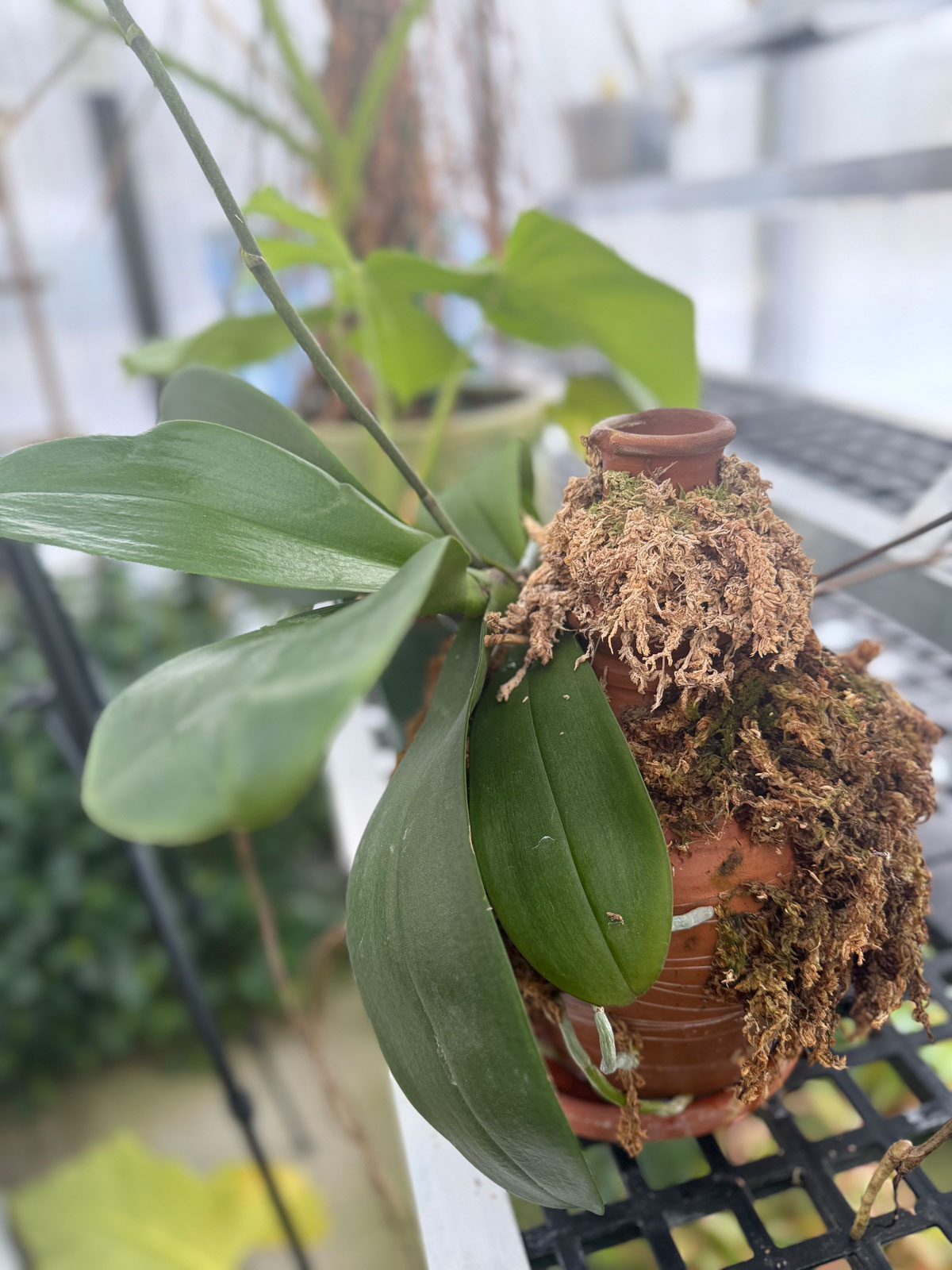
The beauty of this is that I keep the vase filled with water, and the water seeps through the porous terracotta and moistens the sphagnum moss, so this is essentially a self-watering pot. When I notice that it is about half empty or so (I can tell from looking at the moss drying out), I’ll fill it back up with water.
It has been growing really well with this set up, and a few months after I mounted this orchid, it is about to bloom!
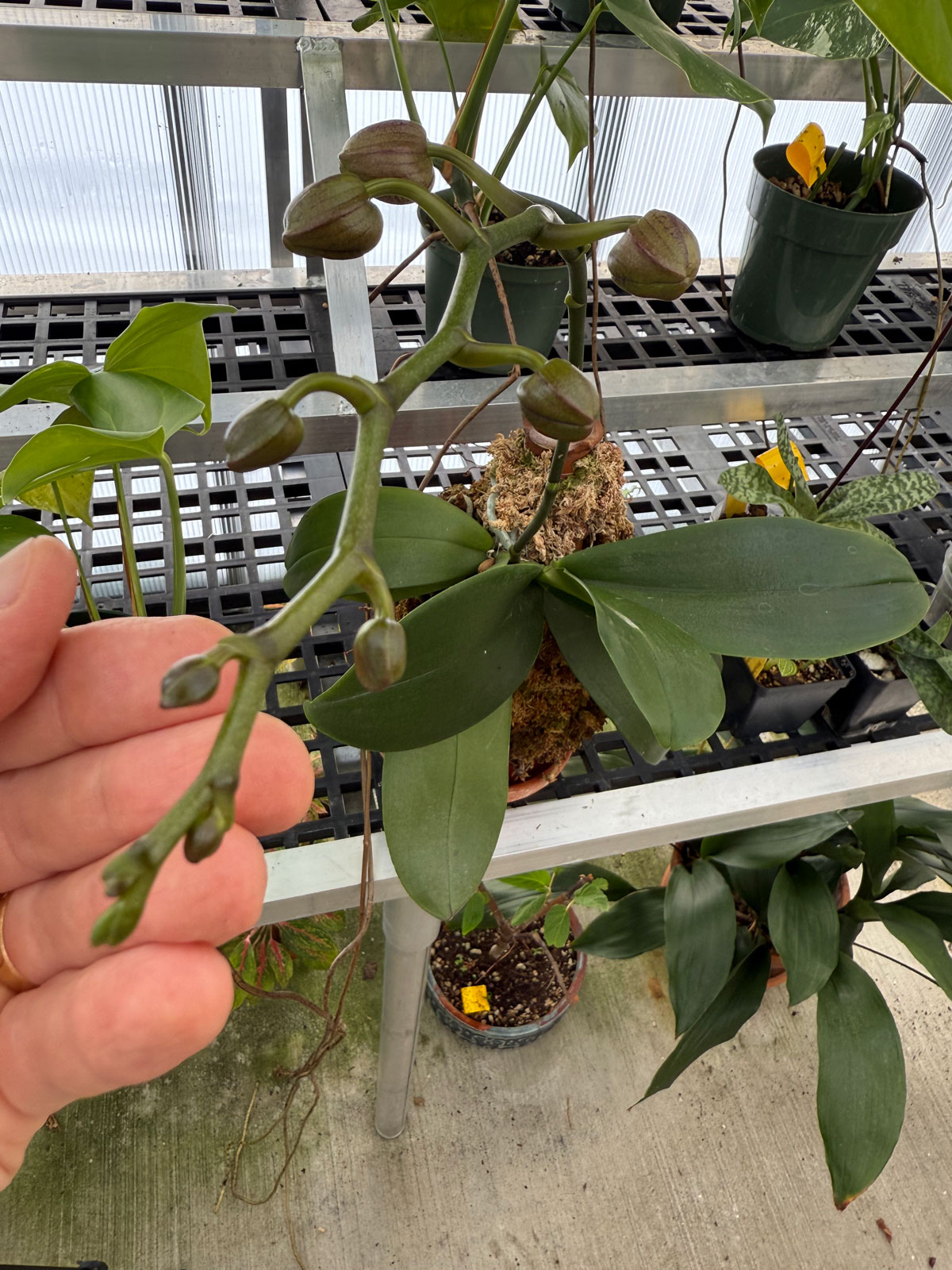
To visually see how I created this, watch this short video on mounting an orchid onto a terracotta vase.
3. Mounted on a wreath
I loved making this project where I took two mini-Phalaenopsis orchids and a variety of air plants and mounted them onto a wreath.
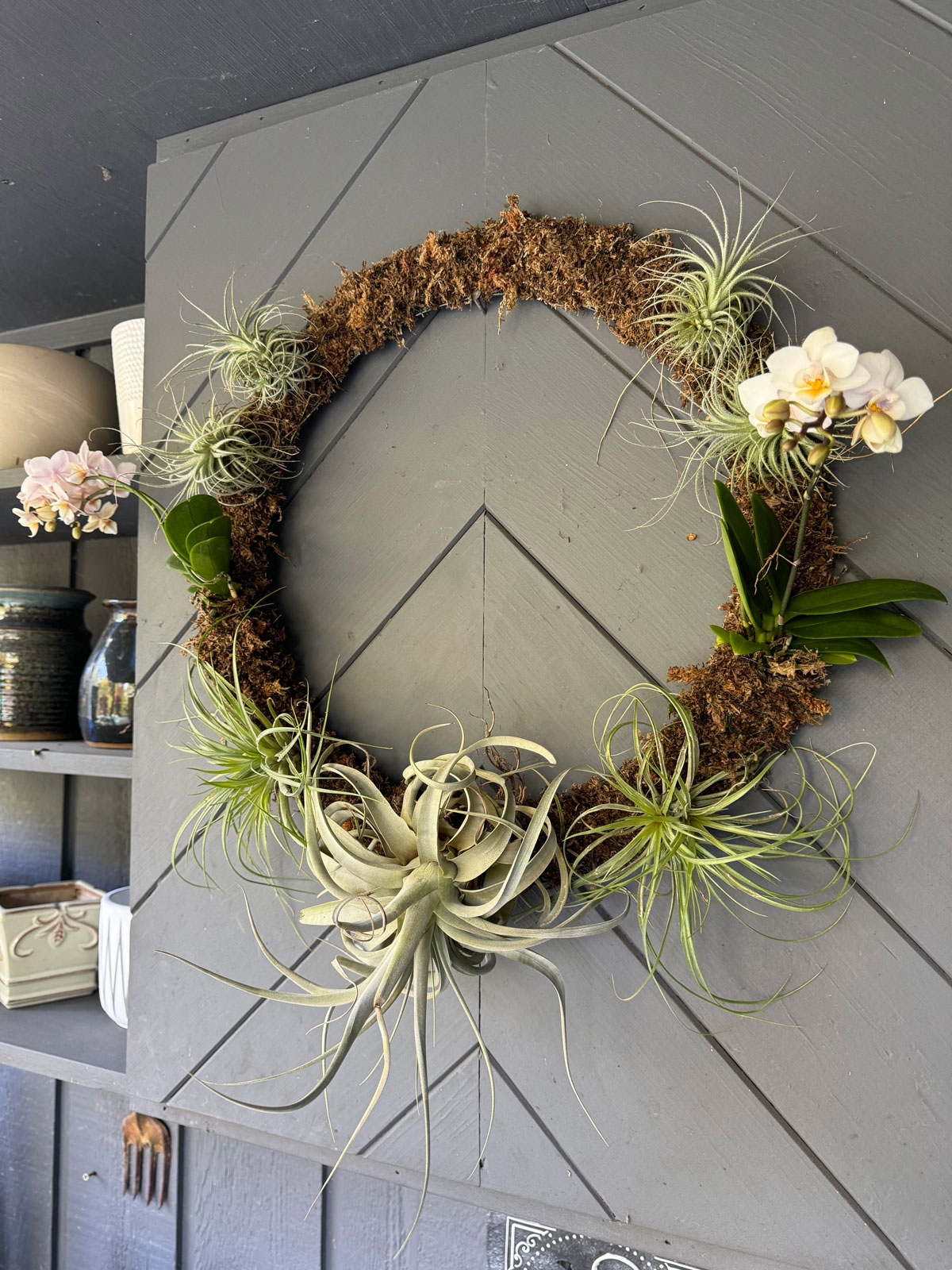
I simply purchased a coated wire wreath frame from a craft store, covered it with sphagnum moss, and mounted several air plants and mini-orchid.
If you’d like to learn exactly how I made this, make sure to read my detailed blog post on how to make a living wreath.
4. In LECA in a vase
The fun part about growing epiphytic orchids like moth orchids is that they can grow in an astoundingly wide variety of mediums. I have this orchid growing in LECA. LECA stands for lightweight expanded clay aggegregate.
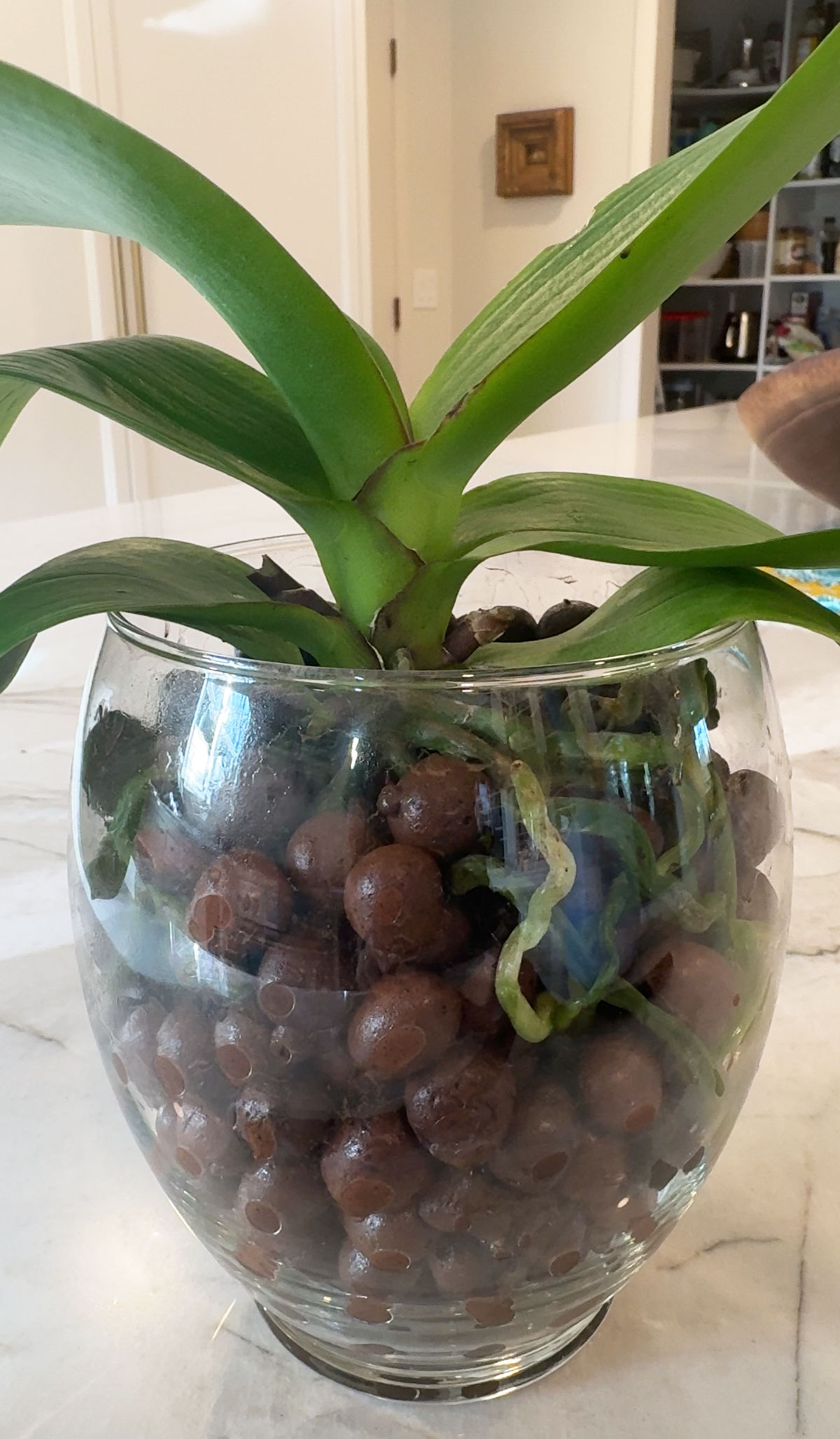
With this setup, I removed a moth orchid from its pot and removed all the bark. Then I soaked some LECA for a few hours (or even overnight) to remove accumulated dust and any impurities and rinsed them in a collander. Then I simply potted up the orchid in LECA in a glass vase.
I first added maybe an inch of LECA at the bottom of the vase, placed the orchid roots in, and filled the vase with LECA. To maintain it, I simply keep about an inch of water at the bottom. The water will distribute by capillary action to all the other LECA balls in the vase. (It is important to soak the LECA like I described in the previous paragraph, so that capillary action will work better).
When there is almost no water left, I simply add another inch of water back to the vase, and keep repeating this cycle. You can also use a very dilute fertilizer solution as well.
Watch this short video to see how I planted an orchid in LECA.
If you want to learn all about how to get your orchid to rebloom reliably and have healthy, thriving moth orchid plants, don’t miss my signature, online orchid care course, Become an Orchid Master. It also includes bonuses with support from me, personally, to guide you in your orchid journey!
5. In water culture
You can also use no medium at ALL to grow orchids and simply grow them in water culture. You don’t want to fully submerge all the roots though otherwise they can rot. The goal is to remove any bark or moss that your orchid was previously growing in, and keep just enough water at the bottom of your growing vessel so that the tips of the roots are in water.
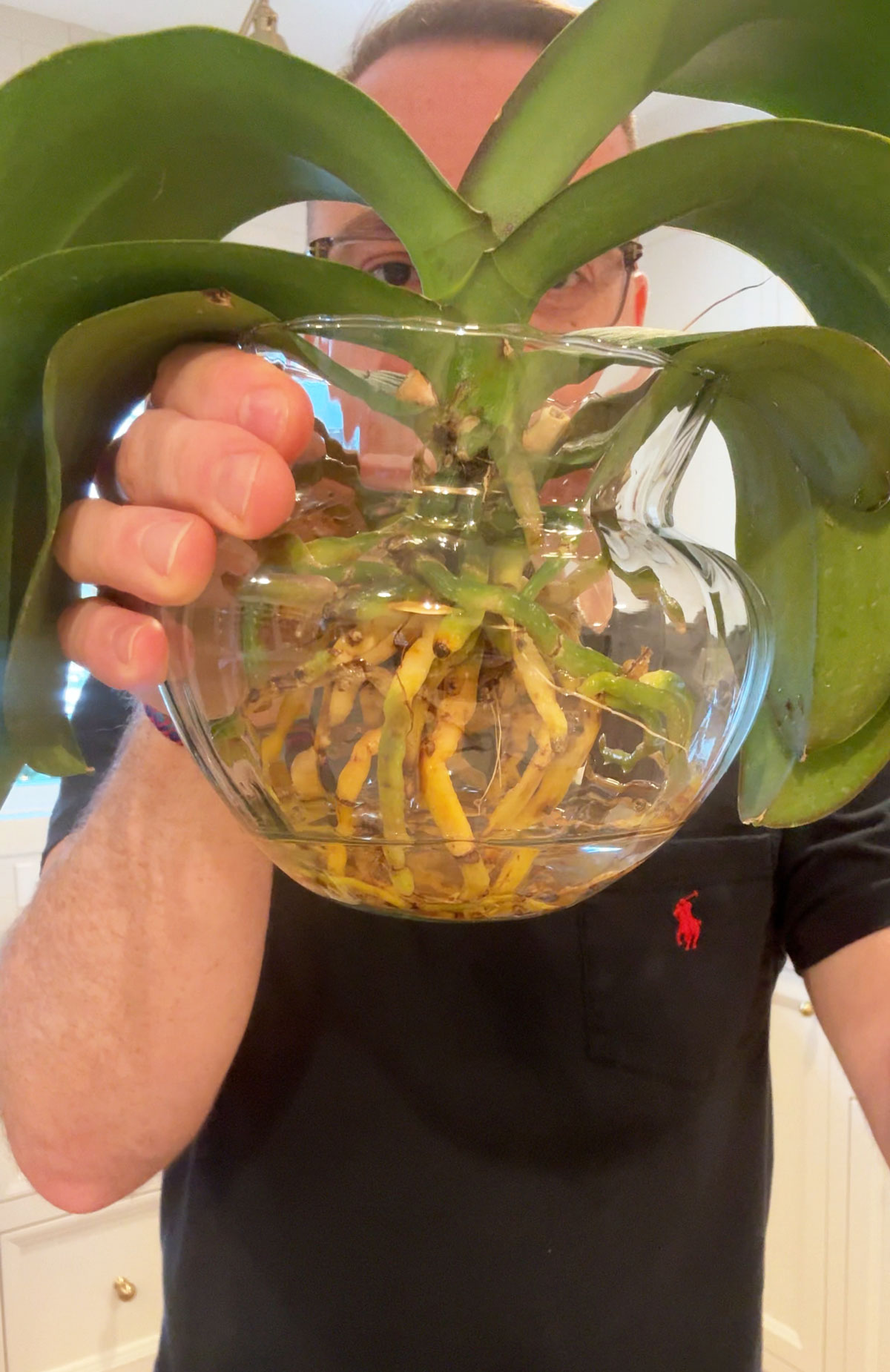
It’s not my favorite method to grow these plants, personally, but a lot of people love it. I’m continuing to experiment with water culture with a small number of plants. Here is my blog post where I show you exactly how to convert an orchid to water culture.
6. Potted in sphagnum moss
Sphagnum moss often gets a bad reputation, but the key is to know when to water your orchids. Moss will hold a lot of water, so with ANY of these methods to grow orchids, you’ll have to adjust your watering accordingly.
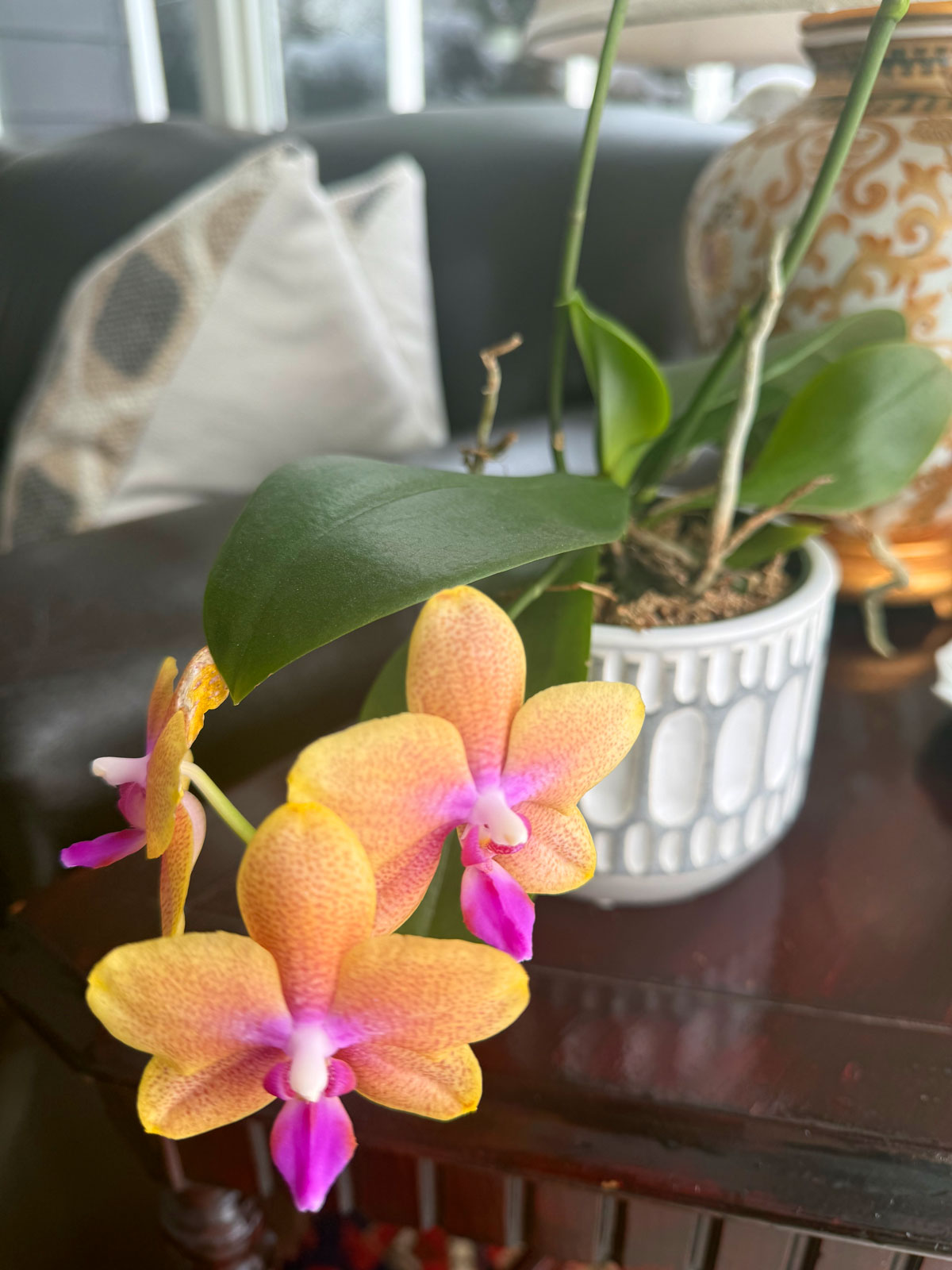
Many people dislike sphagnum moss because orchids are often sold in this medium and the moss is packed very tightly. I still have success with these scenarios because I know when to water. For orchids growing in plastic pots with densely packed moss, I can often go 2-3 weeks before watering again.
Now, if I’m repotting an orchid into sphagnum moss myself, I make sure that it’s not packed too tightly and this helps it to dry out more quickly. I love using the combination of sphagnum moss and terracotta pots. Porous terracotta is a great pot material for orchids since it allows a lot of air to the roots, which is great for orchid roots, and it helps the moss to dry out more quickly.
Sphagnum moss is a wonderful medium for orchids, but the key is knowing how to water orchids growing in moss.
7. Potted in bark
Other than sphagnum moss, orchids are commonly planted in bark mixes and there are many types of bark mixes out there in the market.
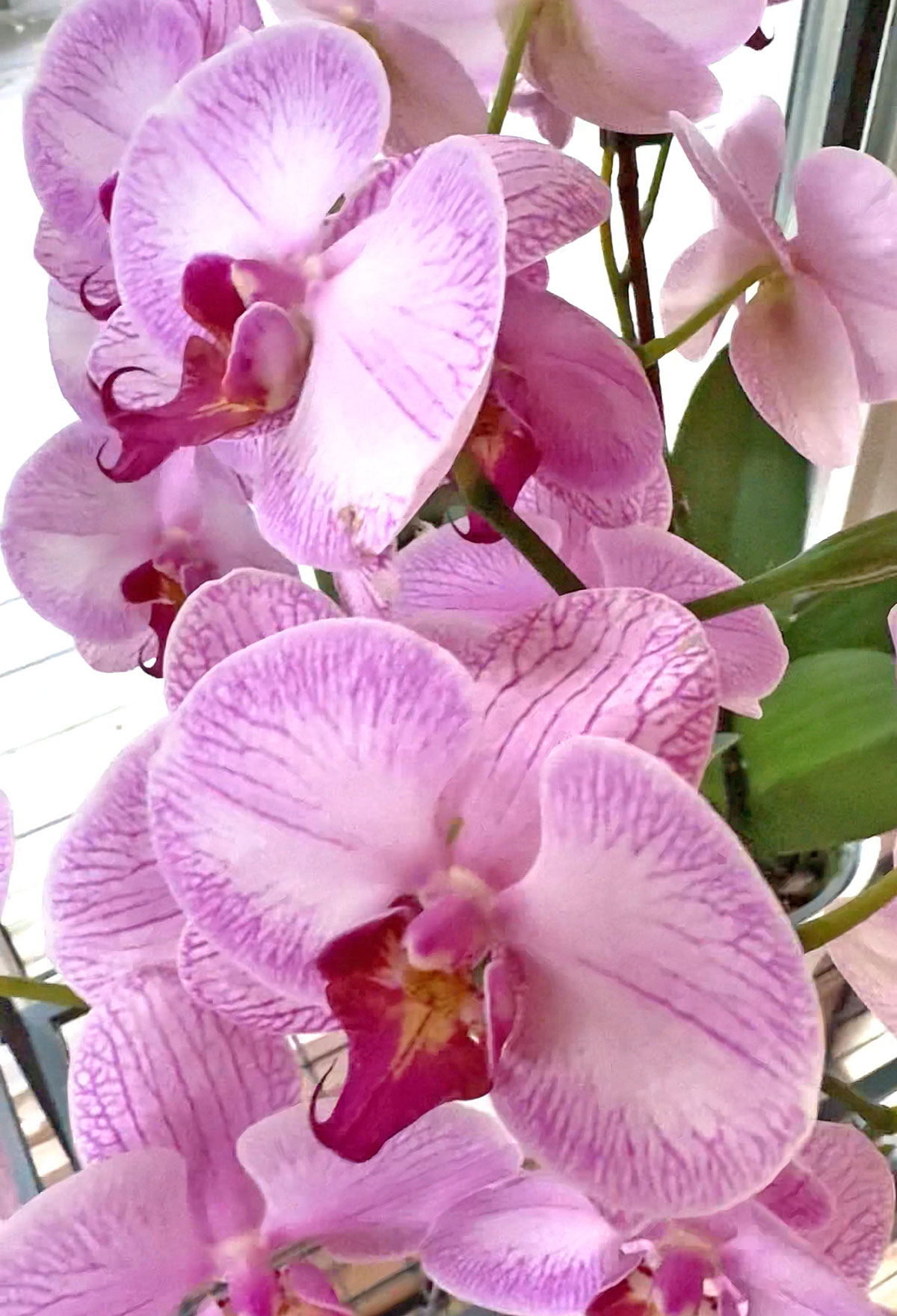
The key to successful orchid growing is to adjust your watering depending on what your plant is growing in. Bark will dry out more rapidly than moss, so it will require more frequent watering. Don’t miss my article on learning how and when to water orchids and I go into some tips with bark grown orchids.
These are just some of the ways that you can grow Phalaenopsis orchids. As long as you are aware of their basic needs (particularly light and watering), the sky is the limit!

